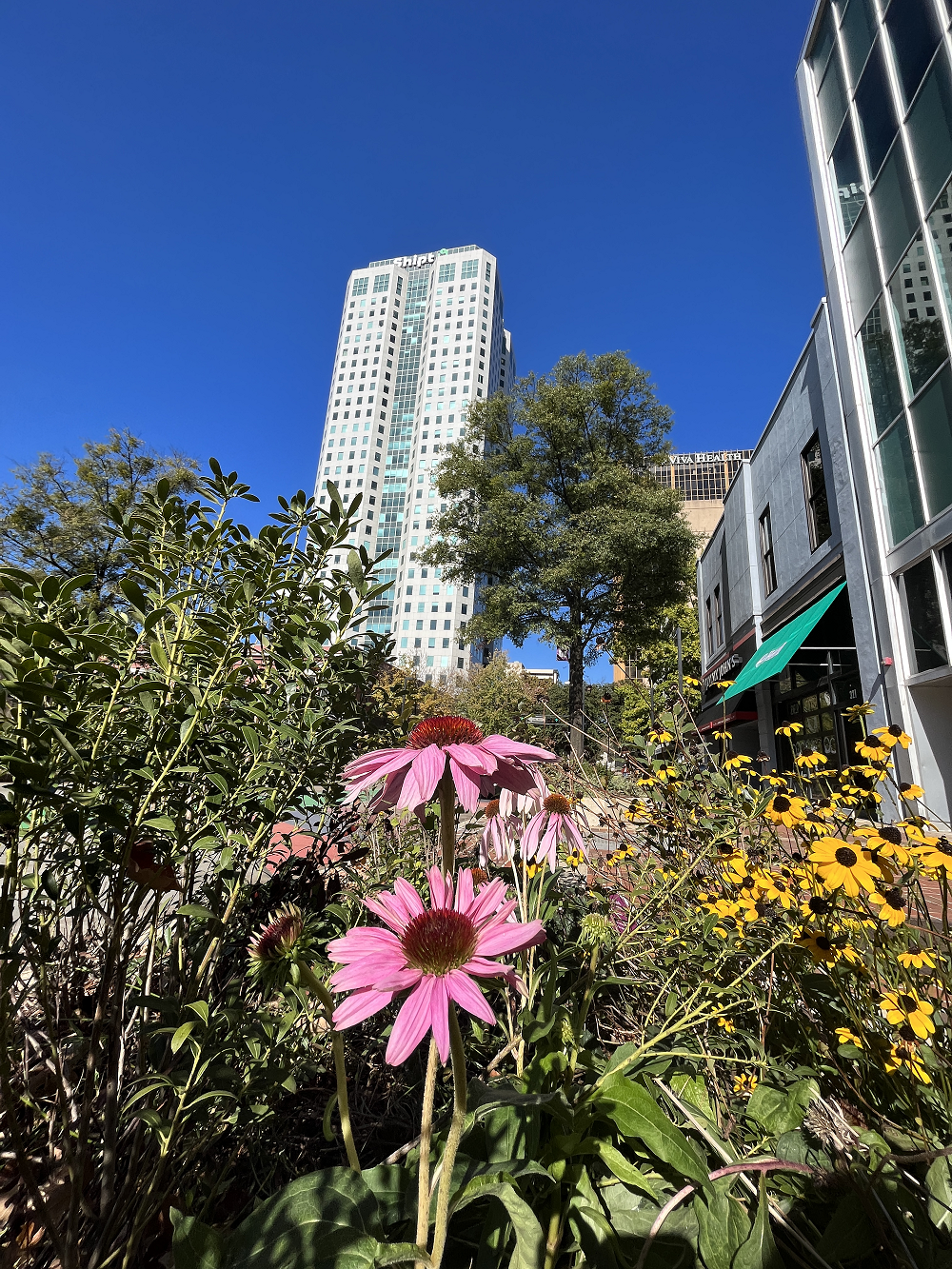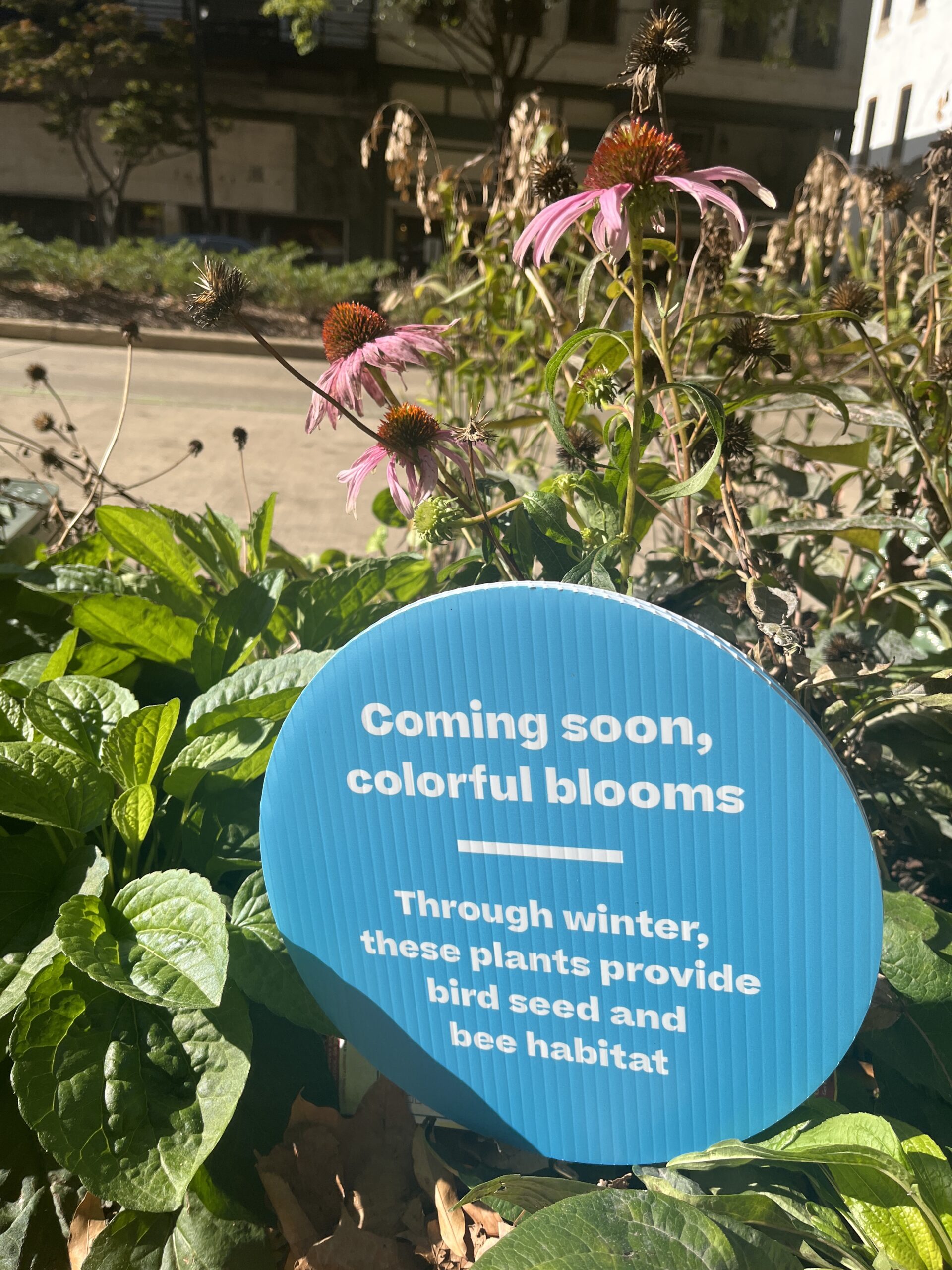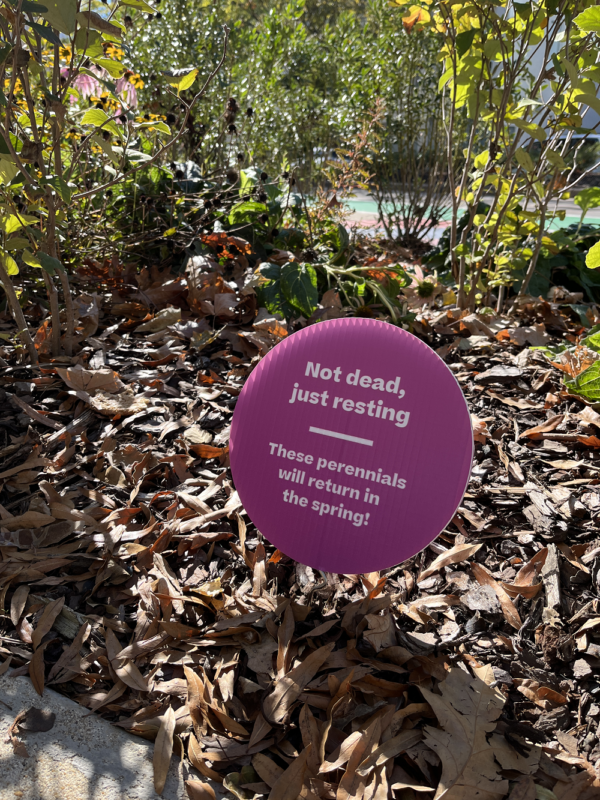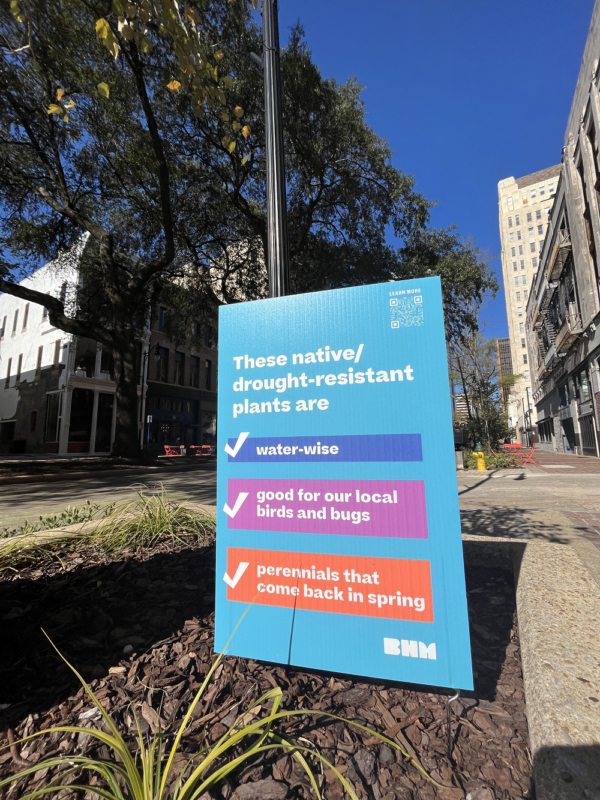 Just like bears, plants, too, go to sleep. Walking around 20th street, you might notice some plants with little to no leaves or turning brown. With winter approaching, these plants are entering dormancy. Some, but not all the plants on the 20th are native species found in Alabama. These plants push all their energy down to the root crown to preserve themselves for the following spring. The plants chosen for the Birmingham Green refresh were strategically placed to offer low-maintenance options and add a sense of place. Plants play a much larger role than just looking attractive.
Just like bears, plants, too, go to sleep. Walking around 20th street, you might notice some plants with little to no leaves or turning brown. With winter approaching, these plants are entering dormancy. Some, but not all the plants on the 20th are native species found in Alabama. These plants push all their energy down to the root crown to preserve themselves for the following spring. The plants chosen for the Birmingham Green refresh were strategically placed to offer low-maintenance options and add a sense of place. Plants play a much larger role than just looking attractive.
So why did we choose to go with a variety of native species and drought-resistant plants?
- These plants are regionally adaptive. Alabama has a unique climate that experiences hot summers and sometimes below-freezing temperatures. The plants native to the area have learned to adapt to their surroundings to continue thriving in the spring and summer months. Short-term flowers and tropical plants would have to keep getting replaced because they can’t survive certain climates.
- Native plants support native wildlife. These plants create a home and provide food for critters like butterflies and birds. The native plants are the base of the food chain; without them, the system falls apart.
- The beds of the plants act as natural filters and prevent runoffs. Since the planters have soil and can absorb heavy rain, there are fewer flooding possibilities in the city.
- Choosing plants that belong in Birmingham adds to our sense of place! The YAYSAYERS are bigger than Birmingham, these plants are the best for Alabama as a whole.

What are some of the plants you can find on 20th?
- Hydrangeas (Hydrangea macrophylla) – Hydrangeas are resilient and hardy plants for southern landscapes. Although widely planted in the Southeast, hydrangeas have their origins in southern Asia and North America. Hydrangeas are relatively easy to grow in well-drained soils containing plenty of organic matter. Like many southerners, they prefer warm morning sun and cooler afternoon shade
- Purple Cone Flowers (Echinacea purpurea)– This flower draws bees and butterflies, ensuring that nearby plants have plenty of pollinators. Purple coneflower plants are drought resistant and often thrive in dry summers. The silvery checkerspot butterfly is a big fan of the purple coneflower, it’s adapted to feed on the foliage and make its cocoon on the plant’s leaves.
- Black Eyed Susans (Rudbeckia hirta) – Native to eastern North America, Black-eyed Susans are Sun worshipers that forgive neglect and are tough-as-nails. They are also valid, long-lasting perennials that will keep coming back and blooming year after year.
- Lantana (Lantana Camara) – Although not native to Alabama, these beautiful flowers serve as food for pollinators. It is a very adaptable species which can inhabit a wide variety of ecosystems; once it has been introduced into a habitat, it spreads rapidly.
- Russian sage (Perovskia atriplicifolia) – Once established, these plants have a long bloom time and can tolerate drought very well. Russian sage is easy to grow, essentially having no disease or insect problems. The plants tend to flop a little, especially when young. Don’t mistake these guys for lavender, as they have a similar appearance.
- Beauty berry (Callicarpa) – This shrub is native to the southeastern United States and has a pinkish-purple berry that appears in clusters. Beautyberry has proven to be an attractive plant for wildlife within its native range. Robins are especially keen on the beauty berries and sometimes stake out a bush.
- Rosemary (Rosmarinus officinalis) – While not native, these plants need very little water and are durable. In the lower South, it is a handsome evergreen shrub. Rub its leaves, and a pine fragrance fills the air.
Before considering these plants dead, just take a second to acknowledge their purpose. Most of the plants on the 20th are considered perennials which means they might appear lifeless during the winter but are just in a state of dormancy. Once spring hits, these plants will flourish again and supply food to critters. These brown plants are not only intentional but beautiful!




Related News
-
Date night done right: Romantic outings you’ll fall for in Birmingham
Filed Under: Birmingham Food & Drink, Downtown Birmingham, Family Friendly, Front Page, Residential, Yaysayers
Looking for the perfect way to spend quality time with your special someone? In this guide, we’ve rounded up a variety of Magic City date ideas tailored to different tastes, personalities and interests. So, grab your partner, or even a few friends, and explore some of Birmingham’s best spots for a truly memorable time.
-
Downtown BHM Fitness Trail: 20+ locations to feel the burn!
Filed Under: Business-Proving, Downtown Birmingham, Front Page, Residential
Downtown Birmingham is where fitness meets community in a vibrant urban landscape. In this trail, we’ll take you through locations on both the north and south sides of downtown, highlighting gyms and outdoor destinations where you can connect with others while working on your fitness goals. Ready to break a sweat?
-
12 anchor businesses in Woodlawn's historic commercial district
Filed Under: Business-Proving, Front Page, Small Business, Woodlawn
The historic Woodlawn commercial district has been home to some exciting openings in the last year. These new concepts represent the evolution of Woodlawn businesses, providing us a glimpse at what the future holds for this special place. However, as the saying goes, Rome wasn’t built in a day – and neither was Woodlawn! That’s why we want to tip our hats and raise a glass to some of the businesses that have paved the way for further development and growth in Woodlawn.